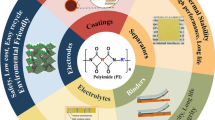Abstract
We had earlier demonstrated the use of polysilicon microelectrodes for recording electrical activity from single neurons in vivo. Good machinability and compatibility with CMOS processing further make polysilicon an attractive interface material between biological environments on one hand and MEMS technology and digital circuits on the other hand. In this study, we focus on optimizing the polysilicon thin films for (a) electrical recording and (b) stimulation of single neurons by minimizing its electrochemical impedance spectra and maximizing its charge storage/injection capacity respectively. The structure-property relationships in ion-implanted (phosphorus) LPCVD polysilicon thin films under different annealing and doping conditions were carefully assessed during this optimization process. A 2D model of the polysilicon thin film consisting of 4 grains and 3 grain boundaries was constructed and the effect of grain size and grain boundaries on dc resistivity was simulated using device simulator ATLAS. Optimal processing conditions and doping concentrations resulted in a 10-fold decrease in electrochemical impedance from 1.1 kΩ to 0.1 kΩ at 1 kHz (area of polysilicon interface = 4.8 mm2). Subsequent characterizations showed that evolution of secondary grains within the polysilicon thin films at optimal doping and annealing conditions (1021/cm3 of phosphorus and annealed at 1200°C) was responsible for decreasing the impedance. Cyclic voltammetry studies demonstrated that charge storage properties of low doped (1015/cm3) thin films was 111.4 μC/cm2 in phosphate buffered saline which compares well with platinum wires (∼50 μC/cm2) and the double-layered capacitance (C dl ) could be sustained between –1 to 1 V before breakdown and hydrolysis. We conclude that polysilicon can be optimized for recording and stimulating single neurons and can be a valuable interface material between neurons and CMOS or MEMS devices.










Similar content being viewed by others
References
W.F. Agnew and D.B. MCreery, Neural Prostheses: Fundamental Studies. (Prentice Hall, New Jersey, 1990).
A. Bragin, J. Hetke, C.L. Wilson, D.J. Anderson, L, Engel, and G. Buzsaki, J. Neurosci. Meth. 98, 77 (2000).
V. Bucher, M. Graf, M. Stelzle, and W. Misch, Biosens Bioelectron 14, 639 (1999).
K.C. Cheung, Y.K. Choi, T. Kubow, and L.P. Lee, MRS Spring Meeting, CA (2002).
S.F. Cogan, P.R. Troyk, J. Ehrlich, and T.D. Plante, IEEE T Bio-Med. Eng. 52(9), 1612 (2005).
R.T. DeHoff and F.N. Rhines, Quantitative Microscopy (Mc-Graw-Hill, New York, 1968).
R. Edrei, E.N. Shauly, and A. Hoffman, J. Vac. Sci. Technol. B. 18(1), 41 (2000).
G.W. Gross, W.Y. Wen, and J.Y. Lin, J. Neurosci. Meth. 15, 243 (1985).
J.M. Henderson, M. Pell, D.J. O’Sullivan, E.A. McCusker, V.S.C. Fung, P. Hedges, and G.M. Halliday, Movment. Disord. 17, 133 (2002).
T.I. Kamins, J. Electrochem, Soc.: Solid-State. Science. and Technology. 127(3), 686 (1980).
D.T. Kewley, M.D. Hills, D.A. Borkholder, I.E. Opris, N.L. Maluf, C.W. Storment, J.M. Bower, and G.T. Kovacs, Sensor. Actuat. A-Phys. 58, 27035 (1997).
H.-J. Kim, and C.V. Thompson, J. Appl. Phys. 67(2), 757 (1990).
M. Kimura, I. Satoshi, T. Shimoda, and T. Sameshima, Jpn. J. Appl. Phys. 40(1), 49 (2001).
Y. Laghla, E. Scheid, H. Vergnes, and J.P. Couderc, Sol. Energ. Mat. Sol. C 48, 303 (1997).
I.S. Lee, C.N. Whang, K. Choi, M.S. Choo, and Y.H. Lee, Biomaterials 23(11), 2375 (2002).
R. de Levie, Electrochim Acta 9, 1231 (1964).
K.A. Ludwig, J.D. Uram, J.Y. Yang, D.C. Martin, and D.R. Kipke, J. Neural. Eng. 3(1), 59 (2006).
M.M. Mandurah, K.C. Saraswat, and T.I. Kamins, IEEE T Electron. Dev. ED-28(10), 1171 (1981).
E.M. Maynard, C.T. Nordhausen, and R.A. Norman, Electroen. Clin. Neuro. 102, 228 (1997).
E.T. McAdams, Surface Topography 2, 107 (1989).
E.T. McAdams, A. Lackermeier, J.A. McLaughlin, and D. Macken, Biosens Bioelectron 10, 67 (1995).
D.B. McCreery, L.A. Bullara, and W.F. Agnew, Exp. Neurol. 92, 147 (1986).
D.B. McCreery, A. Lossinsky, V. Pikov, and L. Xindong, IEEE T Bio-Med. Eng. 53(4), 726 (2006).
J. Muthuswamy, M. Okandan, A. Gilletti, M.S. Baker, and T. Jain, IEEE T Bio-Med. Eng. 52(8), 1470 (2005a).
J. Muthuswamy, M. Okandan, and N. Jackson, J. Neurosci. Meth. 142(1), 45 (2005b).
J. Muthuswamy, M. Okandan, T. Jain, and A. Gilletti, IEEE T Bio-Med. Eng. 52(10), 1748 (2005c).
N.G. Nakhodkin and T.V. Rodionova, J. Cryst. Growth. 171, 50 (1997).
J.L. Novak and B.C. Wheeler, J. Neurosci. Meth. 23, 149 (1988).
S.J Oh, J.K Song, S.K An, and S.J Kim, J. Mater. Sci. Lett. 22, 131 (2003).
S.J. Paik and D.D. Cho, J. Korean. Phys. Soc. 41(6), 1046 (2002).
J. Pine, J. Neurosci. Meth. 2, 19 (1980).
R.H. Pudenz, W.F. Agnew, and L.A. Bullara, Brain. Behav. Evolut. 14, 102 (1977).
M. Rizzone, M. Lanotte, B. Bergamasco, A. Tavella, E. Torre, G. Faccani, A. Melcarne, and L. Lopiano, J. Neurol. Neurosur. PS. 71, 215 (2001).
T.L. Rose and L.S. Robblee, IEEE T Bio-Med. Eng. 37(11), 1118 (1990).
P.J. Rousche, D.S. Pellinen, D.P. Pivin, J.C. Williams, R.J. Vetter, and D.R. Kipke, IEEE T Bio-Med. Eng. 48, 361 (2001).
W. Scheider, J. Phys. Chem. 79(2), 127 (1975).
J.D. Weiland and D.J. Anderson, IEEE T Bio-Med. Eng. 47(7), 911 (2000).
J. Wu, J. Suls, and W. Sansen, Electroanal 12(7), 538 (1999).
Acknowledgments
We would like to thank Arizona Biomedical Research Commision and the NIH for supporting this research. We gratefully acknowledge the use of facilities within the Center for Solid State Science and the Center for Solid State Electronics Research at Arizona State University.
Author information
Authors and Affiliations
Corresponding author
Rights and permissions
About this article
Cite this article
Saha, R., Muthuswamy, J. Structure-property relationships in the optimization of polysilicon thin films for electrical recording/stimulation of single neurons. Biomed Microdevices 9, 345–360 (2007). https://doi.org/10.1007/s10544-006-9039-x
Published:
Issue Date:
DOI: https://doi.org/10.1007/s10544-006-9039-x




